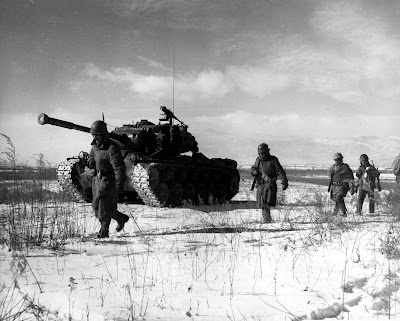Introduction: The "Forgotten War" Unveiled
The Korean War, spanning from June 25, 1950, to July 27, 1953, is often overshadowed by other major 20th-century conflicts, earning it the moniker "The Forgotten War." However, its significance in shaping modern geopolitics, influencing international relations, and impacting millions of lives cannot be overstated. This comprehensive examination delves into the intricate origins, major events, human experiences, and enduring legacy of the Korean War.
Origins of the Conflict: A Peninsula Divided
The roots of the Korean War are deeply embedded in the aftermath of World War II. For 35 years, Korea had endured Japanese colonial rule, which ended with Japan's surrender in 1945. The sudden power vacuum led to the peninsula's division along the 38th parallel, a demarcation decided by the United States and the Soviet Union. The North fell under Soviet influence, while the South aligned with the United States. This division, intended as a temporary administrative arrangement, solidified into two distinct political entities: the Democratic People's Republic of Korea (North Korea) under Kim Il Sung and the Republic of Korea (South Korea) led by Syngman Rhee.
Escalation to War: Invasion and International Response
Tensions between the North and South escalated into open warfare on June 25, 1950, when North Korean forces crossed the 38th parallel, initiating a full-scale invasion of the South. The United Nations Security Council, in the absence of the Soviet Union, swiftly condemned the invasion and authorized military assistance to South Korea. A coalition of forces from 16 nations, predominantly led by the United States, intervened under the UN banner to repel the North Korean advance.
Major Phases of the War: From Pusan to Panmunjom
The Pusan Perimeter and Incheon Landing
By August 1950, North Korean forces had pushed UN and South Korean troops into a defensive enclave around Pusan, in the southeastern corner of the peninsula. This precarious situation prompted General Douglas MacArthur to orchestrate a daring amphibious assault at Incheon on September 15, 1950. The successful landing disrupted North Korean supply lines and facilitated a UN counteroffensive, leading to the recapture of Seoul and driving Northern forces back across the 38th parallel.
Chinese Intervention and Stalemate
As UN forces advanced toward the Yalu River, the border with China, warnings from the People's Republic of China about potential intervention were overlooked. In late October 1950, Chinese forces, termed the People's Volunteer Army (PVA), launched a massive counteroffensive, catching UN forces off guard and pushing them southward. This intervention prolonged the conflict and resulted in a stalemate near the original dividing line.
Human Experiences: Voices from the Frontlines
The Korean War was not just a clash of armies but a crucible of human experiences, with millions caught in its turmoil. The narratives of individuals from diverse backgrounds provide profound insights into the war's multifaceted impact.
Civilians: Enduring the Unimaginable
For the Korean populace, the war brought unprecedented hardship. Cities like Seoul changed hands multiple times, subjecting residents to continuous fear and instability. Mass executions, such as those of political prisoners in the South, and atrocities like the No Gun Ri massacre, where hundreds of South Korean refugees were killed by U.S. forces, underscore the war's brutal reality. The indiscriminate bombing campaigns in the North resulted in massive civilian casualties and the destruction of infrastructure, leading to long-term societal scars.
Soldiers: Diverse Faces in Uniform
The combatants in the Korean War represented a global mosaic. Among them was a Black American infantryman confronting both the enemy and racial segregation within his ranks. A North Korean Naval Academy cadet faced the grim realities of naval warfare, while a South Korean high school student found himself thrust into battle, embodying the war's intrusion into civilian life. Chinese soldiers, often peasants with limited training, endured harsh conditions and showcased resilience in the face of overwhelming odds.
Medical Personnel: Amidst Chaos and Compassion
Medical professionals played pivotal roles amidst the chaos. A Maryknoll nun provided care to orphans and the wounded, symbolizing hope and humanity. A Chinese army medic navigated the challenges of limited supplies and harsh terrains to tend to his comrades, reflecting the universal struggles of wartime medical staff.
War Crimes and Atrocities: The Darker Facets of Conflict
The Korean War was marred by numerous atrocities committed by all sides, reflecting the profound human cost and ethical breaches characteristic of intense conflicts.
Massacres and Civilian Suffering
The conflict witnessed egregious acts against civilians. In South Korea, the government conducted mass executions of suspected communists and political prisoners to prevent potential collaboration with the North. The No Gun Ri massacre stands as a stark example of the war's brutality, where U.S. forces, fearing enemy infiltration among refugees, killed hundreds of civilians seeking safety. In the North, summary executions by communist forces targeted perceived enemies, including former officials and landowners, consolidating power through terror.
Destruction from the Skies: Bombing Campaigns
The extensive bombing campaigns over North Korea resulted in massive civilian casualties and the destruction of infrastructure, leading to long-term societal scars. The U.S. dropped a total of 635,000 tons of bombs, including 32,557 tons of napalm, on Korea, more than during the entire Pacific War. This relentless aerial assault devastated cities and industrial centers, contributing to the high civilian death toll and raising ethical questions about the conduct of modern warfare.
Armistice and Aftermath: An Unresolved Conflict
After years of grueling combat and protracted negotiations, an armistice was signed on July 27, 1953, at Panmunjom. This agreement established the Korean Demilitarized Zone (DMZ), a heavily fortified border that persists to this day.



Comments
Post a Comment